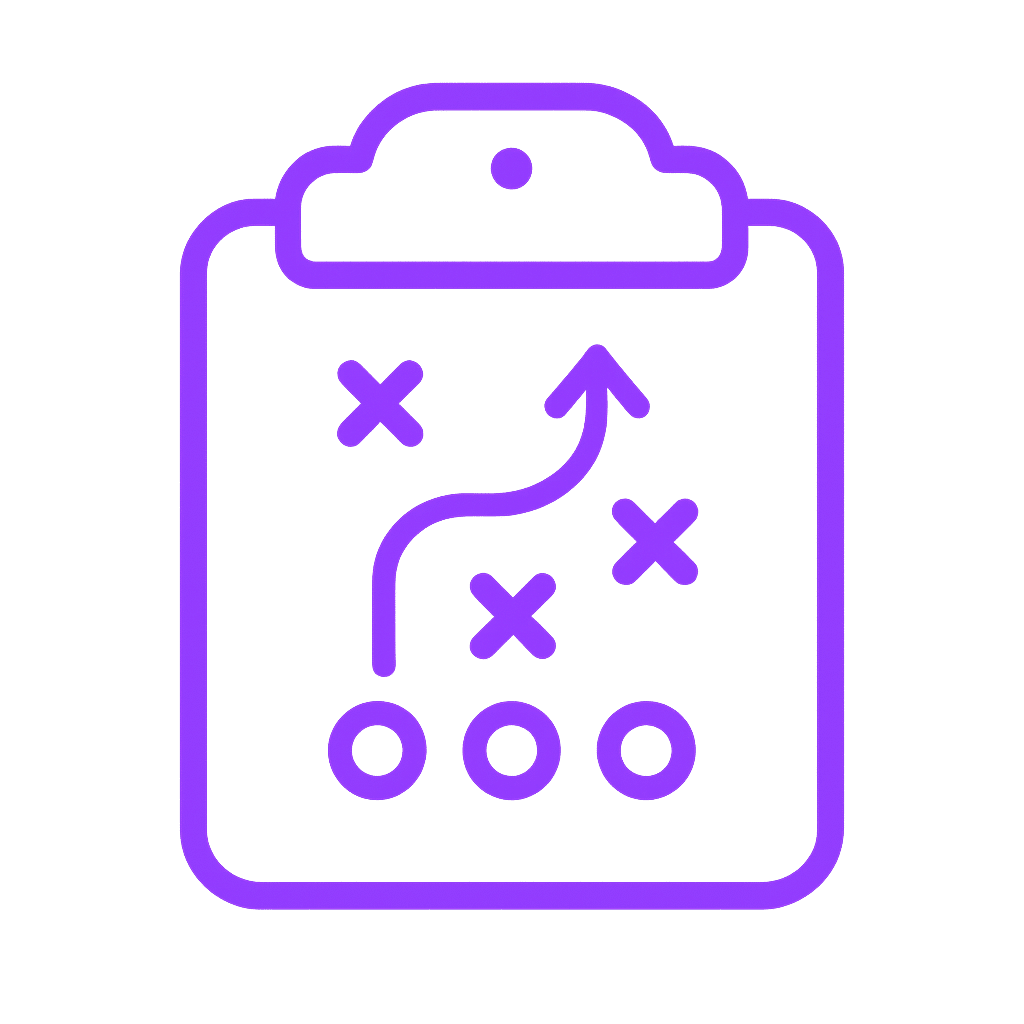How ImpelHub Drives Strategic Business Growth with Data-Backed Tools



Growing a business isn’t just about bold ideas, it’s about smart execution. And smart execution starts with the right metrics. Whether you’re a startup striving to find product-market fit or an established brand scaling to new markets, success hinges on how well you measure progress. Without reliable data, even the best strategies become guesswork.
That’s where business growth metrics come in. These aren’t just numbers on a dashboard; they’re powerful indicators of performance, potential, and pitfalls. They help you understand not just what is happening in your business, but why it’s happening and what to do about it.
This blog unpacks 10 essential metrics every growth-focused company should track, from foundational figures like revenue growth rate to forward-looking insights powered by AI. With platforms like ImpelHub, businesses can move beyond static reports and tap into AI-powered business insights that forecast outcomes, optimize decisions, and drive meaningful growth.
Let’s explore how these metrics turn data into direction and why tracking the right numbers today sets the stage for scalable success tomorrow.

Businesses need to move from hindsight to foresight and that’s where AI-powered business insights come into play. These tools analyze vast volumes of data in real time, uncover hidden patterns, and deliver business intelligence KPIs that are not only descriptive but predictive.
AI-led platforms like ImpelHub help organizations go beyond static dashboards. They surface trends, flag anomalies, and even recommend the next best action. For decision-makers, this means less time crunching numbers and more time making informed, impactful choices. Whether you’re forecasting revenue, optimizing marketing spend, or tracking customer behavior, AI enables a proactive approach to growth.

Revenue growth is the first indicator of business health. It shows whether your strategies, from marketing to operations, are translating into actual income. This metric tracks the pace at which your company is expanding its earnings, giving you a real-time signal of momentum.
Consistent tracking uncovers not just if you’re growing, but how fast, and highlights the moments when strategy shifts yield tangible results.
(Current Period Revenue – Previous Period Revenue)
(Previous Period Revenue) * 100.
The SMB software market is growing quickly. It was worth about $171.8 billion in 2024 and is expected to reach nearly $400.5 billion by 2034. That means it’s growing at an average rate of 8.83% each year. As this market expands, companies that keep up and grow faster than average will put themselves in a strong position to lead. Staying on pace with this growth isn’t just a nice-to-have it’s a key sign that a business is competing well, meeting customer needs, and making the most of new opportunities.
Tips to Improve Revenue Growth Rate
CLV is a vital predictive business metric. Instead of looking at short-term gains, it evaluates the long-term worth of a customer. Understanding CLV helps companies determine how much they should invest in acquiring and retaining each customer.
This is especially important when aligning with growth strategy KPIs, as it supports smarter budget allocation and personalized customer experiences.
CLV = (Average Revenue per Customer) x (Average Customer Lifespan).
A higher CLV suggests stronger loyalty, customer satisfaction, and profitability, all essential for sustainable growth.
Subscription companies focus on CLTV. For example, Netflix calculates CLTV from subscription fees minus content costs ensuring each new subscriber’s expected value justifies its onboarding cost. Steady improvements in CLTV (through upsells or loyalty) can dramatically boost margins.
Tip to Improve CLV
As companies scale, controlling acquisition costs becomes critical. CAC tells you how much you’re spending to bring each new customer on board. It’s a core business performance metric that ensures growth is both aggressive and efficient.
When combined with CLV, CAC helps assess profitability per customer. A low CAC and high CLV is the formula for scalable success.
CAC =
(Total Sales and Marketing Expenses)
(Number of New Customers Acquired)
Tracking this over time helps identify which channels deliver the best ROI and where optimizations can be made.
Fast-growing consumer brands often scrutinize CAC. For instance, Dollar Shave Club aggressively optimized its ad spend early on so that CAC was recouped within months through recurring subscriptions. In SaaS, a benchmark is that CAC should be significantly lower than customer lifetime value.
Tip to Improve CAC

Churn rate measures the percentage of customers who stop doing business with you in a given period. It’s a quiet killer: even small increases in churn can drastically reduce revenue and profitability.
As a predictive business metric, churn signals deeper issues poor onboarding, low product engagement, or inadequate support. By integrating this into your growth strategy KPIs, you can take proactive steps to improve retention.
Churn Rate =
Number of Customers Lost
Total Number of Customers at the Beginning of the Period
* 100
Monitoring this regularly helps teams respond quickly to customer dissatisfaction before it becomes a trend. An example is Netflix, who closely monitors churn and adjusts pricing, content, and delivery to keep it low.
Tip to Improve:
Conversion rate measures how effectively your business turns interest into action, be it purchases, sign-ups, or downloads. It’s a key business intelligence KPI because it reflects the quality of your funnel and customer experience.
A high conversion rate indicates strong alignment between your offer and customer needs, while a low rate suggests friction in the sales or user journey.
Conversion Rate =
Number of Conversions
Total Number of Visitors
* 100
When tracked by source, device, or segment, this metric becomes a powerful lever for fine-tuning your growth strategy KPIs. For a SaaS company, this might be trial sign-ups; for e-commerce, it’s completed transactions; for a B2B manufacturer, it might be form submissions or quote requests.
Tip to Improve Conversion rate
For subscription-based companies, MRR is the most important financial signal. It provides a consistent, predictable revenue figure that helps guide budgeting, hiring, and strategic investments.
It’s one of the top key metrics for growth-focused companies because it reflects not just income, but the reliability of your business model.
Monthly Recurring Revenue (MRR) =
Number of Subscribers x Average Revenue Per User (ARPU).
Let’s go over a few examples to make this clearer,
If you have 50 customers on a $20 plan, 30 on a $50 plan, and 20 on a $100 plan, your MRR would be:
(50 × $20) + (30 × $50) + (20 × $100) = $1,000 + $1,500 + $2,000 = $4,500.
Keep in mind that MRR should reflect only recurring payments. One-time fees like setup charges or non-recurring add-on payments shouldn’t be included in these calculations. Also, if you’re offering discounts, make sure to base your MRR on the discounted price that customers are actually paying, not the full rate.
Tips to improve MRR
NPS helps measure customer satisfaction by asking one question: “How likely are you to recommend us to a friend or colleague?” It’s simple, yet incredibly powerful as a business performance metric.
High NPS correlates strongly with loyalty, retention, and organic growth—making it essential for strategic business growth planning.
NPS =
% Promoters – % Detractors.
Let’s say you’re XYZ Dental Clinic, and you surveyed 100 patients.
NPS =
65% (Promoters) – 15% (Detractors) = +50
This NPS of +50 is a strong indicator of patient loyalty and satisfaction.
Tips to Improve NPs
Sales pipeline velocity answers a key growth question: How fast are we turning leads into revenue? This metric reveals the speed and efficiency of your sales process—a critical indicator of scalability.
As a predictive business metric, it helps forecast monthly revenue and uncover bottlenecks.
Sales Pipeline Velocity =
(Number of Opportunities * Average Deal Size * Win Rate)
Length of Sales Cycle
With insights from platforms like ImpelHub, teams can compare velocity across reps or products and make real-time improvements to their sales funnel.
“Sales pipeline velocity answers a key growth question: How fast are we turning leads into revenue? This metric reveals the speed and efficiency of your sales process, a critical indicator of scalability.” – Dan Tyre, HubSpot.
Tips to Improve Sales Pipeline Velocity

A Nielsen Norman report found that users typically leave a webpage within 10 to 20 seconds, but if the page quickly communicates a clear value, it can capture and hold their attention for significantly longer.
Website engagement rate tracks how users interact with your digital content, how long they stay, what they click, and whether they return. It’s more than vanity analytics; it’s a behavioral indicator of how well your online experience meets user expectations.
This business performance metric directly affects lead quality, conversion rates, and brand perception. High engagement typically leads to higher customer trust and stronger SEO rankings. It also supports strategic business growth by helping teams fine-tune content and UX based on real-time user behavior.
Website engagement rate =
Total Engagements
Total Reach
x 100
“Engaged” sessions often refer to users who spend more than 10 seconds, view multiple pages, or complete a conversion action. Tools like ImpelHub provide this in context, allowing segmentation by campaign, page type, or referral source.
Tips to increase website engagement rate
As companies grow, complexity increases. That’s why tracking operational efficiency becomes essential, it shows how well your resources are being converted into results. It’s a practical measure of productivity, helping identify where costs can be optimized without compromising output.
This metric belongs at the core of metrics for scaling a business because it safeguards against bloated operations that drain profits as revenue grows. According to the McKinsey Global Institute, financial institutions that integrate AI into their operational processes have achieved a 15–25% boost in productivity and a 14% increase in profit margins.
Operational Efficiency Ratio =
(Operating Expenses + Cost of Goods Sold)
Net Sales
The lower the ratio, the more efficiently a company is running. With AI-driven platforms like ImpelHub, you can break down this ratio by department or initiative to uncover inefficiencies and guide smarter resource allocation.
Tips to Improve Operational Efficiency Ration
Growth-focused companies today must replace gut instincts with hard data. ImpelHub’s suite of analytics tools like FanScope, FoeScan, Battleboard, and NextMove does exactly that. Instead of subjective hunches, every insight comes from quantified metrics and evidence.
FanScope zeroes in on who to target. It gathers first‑party and market data to profile demographics, psychographics, buying patterns, and other attributes of both existing and potential customers. This generates clear customer segments and grades using 10 different ICP/Business related KPIs. The result is a holistic, data‑grounded view of demand: instead of guessing which segments matter, companies see exactly which customer groups offer the highest growth potential.
At the same time, ImpelHub’s FoeScan tool systematically maps the competitive landscape. FoeScan uses a multi‑factor algorithm to compare your business against hundreds of firms. It “assigns each (potential competitor) a similarity score by summing 10 different similarity dimensions” such as product/service features, target audience, size, geography, industry, etc. By applying statistical filters (a bell‑curve cut-off), FoeScan distills this to the top 5 rival companies that you should really worry about. It then digs deeper into those rivals’ playbooks: Once the top competitors are identified, FoeScan then analyses their top strategies and even suggests tailored counter-strategies.
With competitors and customers in focus, ImpelHub’s Battleboard™ provides a visual map of where you stand. It benchmarks your performance against the chosen rivals across 20+ strategic industry specific competitive dimensions relevant to your industry (product quality, brand strength, pricing, distribution, etc.) . Every dimension is scored (0–10) with rationale notes, so you can see at a glance your strengths and gaps relative to competitors.
By unifying market intelligence and internal insights, Battleboard makes strategy visible and actionable. Instead of scattered spreadsheets, every department can see the same updated reality where the company leads, lags, and has room to win
After mapping customers and competitors, ImpelHub’s NextMove module turns insight into action. Every potential growth strategy (e.g. a new marketing campaign or product pivot) is scored by Impact and Innovation. The Impact Score measures how much that strategy could move key metrics (revenue, market penetration, efficiency, cost reduction, etc.). The Innovation Score gauges how novel or differentiating the strategy is its scalability, uniqueness, and departure from “business as usual”. Each score is on a 1–10 scale. ImpelHub then applies statistical analysis (bell‑curve filtering) to these scores: the strategies that land in the top 16% for both impact and innovation are flagged as high-priority. In effect, NextMove does two things. It quantifies outcomes (no more arguing if an initiative “feels” important). An Impact Score above or an Innovation Score above signals a strategy likely to move the needle. It narrows choices. By focusing on the mathematically top-ranked strategies, NextMove guides leadership to invest resources in the ideas with the highest expected payoff. Each step is transparent and justified by numbers not by siloed opinions or gut calls. As a result, ImpelHub moves companies from intuition-based strategy to evidence-driven execution.
Business growth isn’t about luck, it’s about making smarter choices. And smarter choices come from having the right information at your fingertips.
The 10 key metrics we’ve walked through aren’t just numbers for your reports, they’re signals. They tell you when you’re on track, when you need to adjust, and where your greatest opportunities lie.
With a platform like ImpelHub, you’re not guessing what’s going on in your business, you’re seeing it. From understanding your customers’ needs and spotting hidden market opportunities, to keeping a close watch on your operations, it lets you make decisions based on real data instead of hunches. It guides you toward smarter strategies, helps you avoid costly mistakes, and lets you scale with confidence. Whatever your goals are entering a new market, improving profits, or strengthening loyalty, having the right metrics at your side makes all the difference.

2 combos (1 competitor × 2 dimensions)
20 combos $5 per additional combo
100 combos $4 per additional combo
280 combos $3 per additional combo

7 Steps / 8 – 10 days / 2 – 3 hours of your time
Maximize your impact with ImpelHub’s Growth Lever Identifier—our AI-powered system that discovers your single biggest growth lever and accelerates your success. By analyzing your revenue streams, marketing channels, and core metrics, it highlights the most effective path to scalable growth and pinpoints your highest-ROI strategy, so you can focus on what truly matters, multiply your revenue, and stay ahead in today’s competitive market. Our clear, data-driven action plan ensures you can scale faster and more efficiently than ever.
Insight360, part of the “Your Business” pillar in the Business Brain/Context framework, delivers data-driven insights across 9 categories and 40+ business aspects, including market positioning, competition, revenue, trends, and brand identity.
It drives two key outputs:
With a multidimensional business view, Insight360 helps optimize positioning, enhance engagement, and accelerate growth.
Insight360+ expands on Insight360 with 15 additional dimensions, offering a deeper analysis of business strategy. It provides a self-reflective framework to uncover opportunities in:
With Insight360+, businesses refine strategies, strengthen positioning, and drive sustainable growth.
FanScope is a comprehensive catalog of buyer types, categorized by 10 key attributes, helping decision-makers assess and refine target audiences before segmentation.
As the first step in segmentation, FanScope informs:
By analyzing buyer roles, revenue segments, and purchase probabilities, FanScope enhances targeting, optimizes resources, and improves sales and marketing efficiency.
The Segmentation Module enhances customer targeting with Rated ICPs, Personas, and Firmographics (B2B), assessing each ICP across 22 attributes, including:
ICP Scoring evaluates profiles on 10 numerical dimensions, enabling businesses to prioritize high-value targets efficiently.
FoeScope is a competitive analysis framework that evaluates competitors across three revenue segments—small, medium, and large—relative to the business’s revenue. It assesses:
As a precursor to CounterEdge, FoeScope helps businesses identify and categorize key competitors, setting the stage for deeper competitive strategy development.
CounterEdge analyzes competitor growth strategies, their impact on the business, and countermeasures to stay competitive. It evaluates:
By leveraging CounterEdge, businesses can anticipate threats, mitigate risks, and implement winning strategies.
NextMove is a growth strategy framework that helps businesses identify, evaluate, and implement high-impact strategies. Each strategy is numerically rated across 10 dimensions, similar to ICP Rating, to prioritize the most effective paths for expansion.
With NextMove, businesses gain a data-driven approach to strategic growth, ensuring scalability, market expansion, and long-term success.
Launch-Execution Blueprint creates high-level execution plans for growth strategies, prioritizing them based on impact, feasibility, and business alignment.
By leveraging Launch-Execution Blueprint, businesses can streamline execution, focus on high-impact strategies, and drive measurable growth.
Maximize your impact with ImpelHub’s AI-powered Growth Lever Identifier. By analyzing revenue streams, marketing channels, and core metrics, it uncovers your biggest growth lever and highest-ROI strategy.
With a clear, data-driven action plan, you can focus on what matters, scale faster, and stay ahead in today’s competitive market.
Maximize your impact with ImpelHub’s Growth Lever Identifier—our AI-powered system that discovers your single biggest growth lever and accelerates your success. By analyzing your revenue streams, marketing channels, and core metrics, it highlights the most effective path to scalable growth and pinpoints your highest-ROI strategy, so you can focus on what truly matters, multiply your revenue, and stay ahead in today’s competitive market. Our clear, data-driven action plan ensures you can scale faster and more efficiently than ever.
Feature Gap Analysis is a powerful tool within ImpelHub that identifies missing or desired features based on the needs and expectations of the target audience. By leveraging Business Brain, it ensures that feature recommendations are strategically aligned with business goals and market demand.
Key Benefits:
Identifies Missing Features – Pinpoints gaps in the product or service offering.
Aligns with Target Audience Needs – Ensures features meet user expectations.
Prioritization via Impact Scoring – Helps decision-makers invest wisely.
Data-Driven Scoring Mechanism
Each feature is rated across five numerical dimensions, enabling businesses to prioritize development efforts effectively:
Revenue Boost
Cost Reduction
Customer Acquisition
Customer Retention
Customer Satisfaction
By leveraging Feature Gap Analysis, businesses can make informed investment decisions, enhance their product-market fit, and drive customer engagement and growth
UXI (User Experience Investigation) is a UI/UX audit framework that evaluates core business pages with unparalleled depth, powered by ImpelHub Audit. Unlike standard audits, ImpelHub leverages Business Brain, ensuring that recommendations are contextually aligned with the company’s strategy, market position, and growth objectives.
Key Audit Components:
Feature & Objective – Identifies key UI/UX elements and their purpose.
Details & Justification – Explains audit findings in a business-relevant manner.
Impact & Area – Evaluates influence on user experience.
Rationale – Context-driven reasoning for suggested improvements.
Impact-Driven Scoring Mechanism
Each UI/UX strategy is numerically rated across five dimensions, helping decision-makers prioritize investments:
Revenue Boost
Cost Reduction
Customer Acquisition
Customer Retention
Customer Satisfaction
This data-driven scoring allows businesses to allocate resources effectively, ensuring maximum ROI on UI/UX improvements and driving sustained growth
Detailed Execution Blueprint is a task list and project roadmap that breaks down high-level strategies into step-by-step, week-by-week execution plans, ready for team assignment and implementation.
Key Features:
Detailed Task Breakdown – Converts strategies into actionable steps.
Week-by-Week Execution Timeline – Ensures structured and phased implementation.
Team Assignments – Each plan is ready to be assigned to the relevant team for execution.
Operational Clarity & Accountability – Provides a clear roadmap to track progress.
By leveraging Launch-Detailed Plan, businesses can ensure smooth execution, improve efficiency, and drive successful implementation
FanScope is an extensive catalog of potential buyer types, both direct and indirect, categorized using 10 key attributes. It helps decision-makers identify, evaluate, and include or exclude buyer types before the segmentation process.
As the first step toward segmentation, FanScope informs:
ICP (Ideal Customer Profile) Definitions
Persona Development
Firmographics (B2B segmentation)
ICP Scoring
By analyzing buyer roles, revenue segments, pain points, and purchase probabilities, FanScope enables businesses to refine their target audience, optimize resource allocation, and improve sales and marketing efficiency.
The Segmentation Module refines customer targeting through Rated ICPs, Personas, and Firmographics (B2B). Each ICP is assessed across 22 attributes, covering:
Profile & Behavior – Segment, characteristics, decision-makers, and buying behavior.
Business Fit – Pain points, goals, product needs, and purchase drivers.
Engagement Factors – Technology, content consumption, marketing channels, and objections.
Strategic Insights – Value proposition, competition, and customer service needs.
ICP Scoring rates each profile on 10 numerical dimensions, helping decision-makers quickly prioritize the best targets for sales and marketing strategies
FoeScope is a competitive analysis framework that identifies and evaluates competitors across three revenue segments—small, medium, and large—relative to the business’s revenue. It assesses competitors based on:
Key Products/Services – Most similar offerings.
Geography – Market overlap.
Target Audience – Shared customer base.
Similarity Score & Reasoning – Measures alignment with the business.
FoeScope serves as a precursor to CounterEdge, laying the groundwork for deeper competitive strategy development by helping businesses identify and categorize their most relevant competitors
CounterEdge analyzes competitor growth strategies, their impact on the client’s business, and countermeasures to stay competitive. It evaluates:
Competitor Strength & Market Impact – Key advantages and threat level.
Affected Business Touchpoints – Areas influenced by competition.
Adaptation Strategy – Actionable countermeasures.
Impact Grade & Rationale – Severity of threat (1-5).
Potential Business Benefits – Strategic opportunities.
By leveraging CounterEdge, businesses can anticipate threats, mitigate risks, and implement winning strategies.
NextMove is a growth strategy framework designed to help businesses identify, evaluate, and implement high-impact strategies. Each strategy is numerically rated across 10 dimensions, similar to ICP Rating, allowing decision-makers to prioritize the most effective paths for expansion.
Key Assessment Areas:
Strategy Type, Objective & Target Audience – Defines the approach, aligns with Ideal Customer Profiles (ICPs), and ensures relevance to market needs.
Key Tactics & Content Marketing – Outlines the execution plan, including marketing initiatives to drive engagement.
Required Resources & Risk Assessment – Identifies necessary investments, potential risks, and feasibility.
Timeline & Measurement Metrics – Provides a structured roadmap for execution and tracking success.
Relevance (%) & Potential Impact – Scores strategies based on alignment with business goals, market trends, and competitive landscape.
By leveraging NextMove, businesses gain a data-driven approach to strategic growth, enabling them to quickly assess and implement the most effective strategies for scalability, market expansion, and long-term success.
GTM/Scale Up Playbook creates high-level execution plans for selected growth strategies, ensuring effective implementation. It prioritizes strategies based on impact, feasibility, and alignment with business objectives.
Key Components:
Phases – Defines the execution stage.
Strategy Score – Numerical rating for prioritization.
Strategy Suggestions & Rationale – Recommended actions with justification.
Highlights – Key takeaways and strategic advantages.
Related Strategy – Links to complementary approaches.
Targeted ICPs (ICP Phase) – Aligns execution with the right customer segments.
By leveraging GTM/Scale Up Playbook, businesses can streamline execution, focus on high-impact strategies, and drive measurable growth.
Insight360 is a key component of the “Your Business” pillar within the Business Brain/Context framework. It delivers data-driven insights across 9 key categories, covering 40+ critical business aspects, including market positioning, competitive landscape, revenue analysis, industry trends, and brand identity.
These insights drive two strategic outputs:
Custom Growth Strategies – Tailored plans developed with AI, Impelian, Impelist, and human expertise to support business expansion and address key challenges.
Contextual UI/UX Audit – Identifies feature gaps and aligns product offerings with market needs.
Insight360 provides a multidimensional understanding of the business, industry, and competitive landscape. By leveraging these insights, businesses can optimize market positioning, enhance customer engagement, and accelerate growth.
Insight360+ enhances Insight360 by analyzing a business at a deeper level through 15 additional dimensions. It provides a self-reflective framework to uncover strategic opportunities in:
Sales & Revenue Optimization – Pricing models, sales processes, and client strategies.
Market & Digital Presence – Online marketing, industry positioning, and partnerships.
Innovation & Technology – AI /Tech integration and product/service development.
With Insight360+, businesses gain a more comprehensive perspective to refine strategies, strengthen market positioning, and drive sustainable growth.

Founder & CEO

Co-Founder & Chief Revenue Officer
Please enter your email to download the Sample Score Card.
Please enter your email to download the playbook.
Unlock exclusive tools for growth